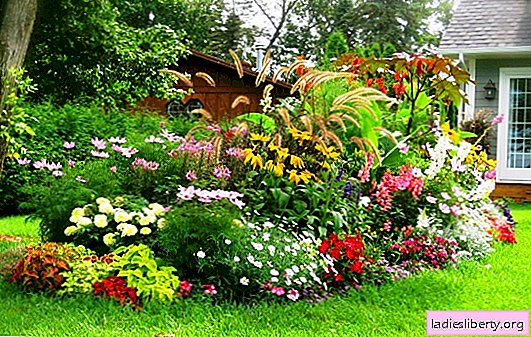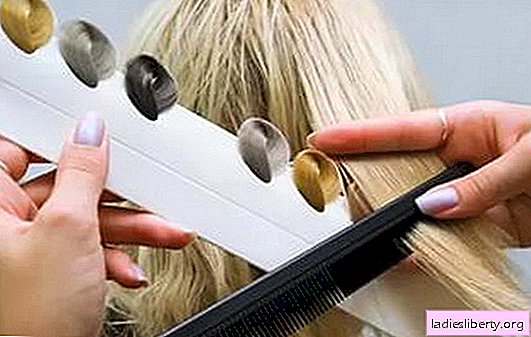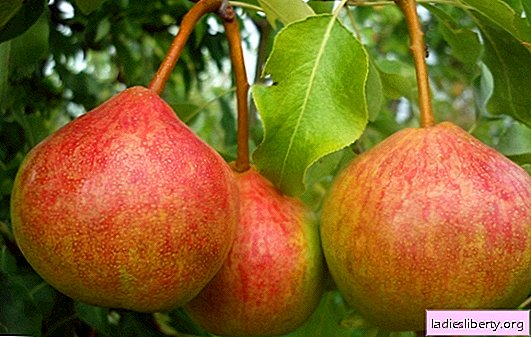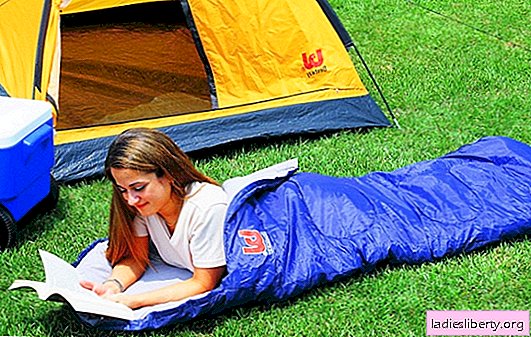
A summer residence is a place of rest that cannot be imagined without flowers.
To create a bright and attractive flower garden, care for which will not take much effort and time using unpretentious plants. Of course, there are no flowers that do not require care, but there are those for which it is minimal.
Perennial flowers that do not need special growing conditions are ideal for summer cottages.
What flowers to plant on the site?
There are a lot of decorative perennials, with their help you can create not only a flower bed, but also decorate the paths and revitalize the garden design. By choosing the right plants, you can enjoy the beauty of flowering from spring to late autumn. In addition, shade-loving specimens are able to give a unique look to even the most secluded places. On the flowerbed must be present frost-resistant species that tolerate negative temperatures, sharp cooling and gusts of wind.
All flowers grown in a summer cottage can be divided into several types:
• spring early flowering perennials;
• long flowering plants;
• beautifully blooming;
• for registration of a border;
• for alpine hills;
• decorative leafy perennials;
• succulent plants for the garden.
Despite the variety of varieties, species and unpretentiousness of plants, it is nevertheless necessary to take into account the composition of the soil and the climatic conditions of cultivation. With this approach, the flowerbed will delight with its appearance for more than one year.
Perennial spring flowers that do not require care
Bulb plants enjoy their appearance already with the advent of the first spring days. Many types of bulbs practically do not require care and need replanting no more than once every several years. Such flowers are the first to open their buds and remind of the awakening of nature. All they need is the absence of rodents that spoil the bulbs. You can secure plants with modern planting baskets that facilitate the process of caring for them.
Botanical tulips
Group plantings of tulips look good on flower beds, along paths or in a rocky garden. Flowering in tulips begins quite early, usually in March. The duration of flowering depends on the species and lasts up to two months. Tulips are divided into short and tall species. The former grow to only 10 cm, when the latter are able to reach 50 cm in height.
All types of tulips are planted in the fall, somewhere in mid-September. Flowers prefer well-lit areas of the garden, without stagnation of water. It is advisable that in the summer the soil remains dry and in the spring moderately moist.
The color of the botanical tulips is very diverse, which allows to realize any fantasy. Unlike ordinary tulips, botanical ones do not require annual digging of bulbs, growing nests give them additional beauty, flowering becomes abundant.
Common types of botanical tulips in the garden:
• Greig's tulips;
• Kaufman tulips;
• Foster tulips;
• forest tulip;
• Turkestan tulip.
Dwarf forms of these flowers will be appropriate in rock gardens, on lawns and in natural style gardens.
Iridodictiums
Excellent plants that grow well under deciduous trees, in rockeries and on lawns. Flowering period - April, in some regions - the end of March. For planting, you should select a well-lit place, without stagnation of water. The soil must be well drained, the plant does not tolerate even the slightest wetting. Iridodictiums have been planted since the end of August. The height of some species does not exceed 10 cm.

Early flowering bulbous plant species include:
• crocuses;
• daffodils;
• muscari;
• Pushkin.
Long blooming perennial flowers for a summer cottage
Unpretentious perennials are good because they do not require annual planting, growing seedlings and other troubles. Every year they grow and become more beautiful. Such perennial flowers for the garden that do not require care are a godsend for any summer resident.
Astilba
The plant tolerates a slight shadow, grows well under shrubs and between trees. Spectacular carved foliage and an unusual form of inflorescence attract summer residents with their beauty. Astilba is practically not damaged by pests, is not sick and requires minimal care. All she needs is the removal of dry inflorescences.
Watering the plant is not necessary often, in rainy summer you can do without it at all. Some winter species need shelter, but this depends on the growing climate zone.
Astilbe blooms from June to September. Rhizomes are planted in spring, from April to May, or in autumn. Plant height ranges from 20 to 120 cm. The flower responds well to the introduction of organic matter into the soil.
Meadowsweet
A find for wetlands and clay soils. You can grow meadowsweet trees not only in the sun, but also in the shade. The only condition is always wet soil.
Flowering meadowsweet begins in June and lasts until September. Plants are planted in May. Due to its size, it is suitable for growing rockeries or rabatok. The height of the common meadowsweet ranges from 30 to 250 cm.

It is impossible to imagine a rural garden without such long flowering plants as:
• rudbeckia - in appearance resembles a sunflower, flowering is very spectacular;
• lavender - a medicinal plant that helps get rid of harmful insects in the house and garden;
• swimsuit - plants for the design of ponds and wet areas;
• geranium - a flower for any soil and light;
• perennial cornflower - a plant for sunny areas.
Beautifully flowering perennials that do not require maintenance
Among the many perennials, one can distinguish some beautifully flowering species that are not afraid of frost and winter well without shelter.
1. Delphinium - in one place grows up to 5-6 years.
2. Primrose forest - spring primrose.
3. Phlox - unpretentious herbaceous plants of various colors.
4. Clematis - a climbing plant for creating hedges, decorating fences.
5. Peonies are pretty fragrant flowers.
6. Chamomiles - large-flowered unpretentious flowers for giving.
Hydrangea
A beautiful shrub with large spherical inflorescences that form from spring until the very frosts.
The color of hydrangea is quite diverse and depends on the acidity of the soil. They grow white, pink, purple, cream and blue hydrangea.
Hydrangea is planted at partial shade, as the bright sun burns delicate leaves and flower petals. The most important point in hydrangea care is pruning a plant. The flower is practically not affected by pests, tolerates winters. In some regions, it needs shelter.

Daylilies
Herb plants for sunny areas. They grow at one place for up to 7 years, after which a plant transplant is required. Long flowering, memorable. The color and shape of the flowers is diverse and depends on the variety.
The plant is unpretentious, does not need frequent watering. It is good enough to wet the soil several times a week. Not prone to disease, rarely affected by pests.
Decorative deciduous perennial flowers for a summer cottage
Decorative leafy flowers deserve special attention. They attract attention not only with their flowering, but also with the beauty of the leaves. Many of them are indispensable plants for creating flower arrangements in the garden.
Among the decoratively deciduous unpretentious plants go to the flowers beloved by all:
• heichera;
• hosts;
• ferns;
• cuffs;
• cineraria;
• fescue;
• Lychnis.
Perennial decorative leafy plants with silver leaves are well combined with pink flowers, complement the composition in blue tones, and serve as an excellent background for bright and colorful flowers.

When making compositions in the garden, one must take into account not only the color of the leaves, but also their shape. Remember, everything should be in moderation!
Ground Care Succulent Flowers Maintenance-Free
Representatives of the genus Tolstyankovyh are widely used in the design of alpine hills and as ground cover plants. Stonecrops and various milk jugs look great in rocky gardens, giving the composition a maximum naturalness.
Succulent plants need to be planted in a sunny area, where there is no stagnation of moisture. All species prefer sandy soil, well take root among stones. Succulents are not demanding care, do not need frequent watering, can do with natural rainfall.












